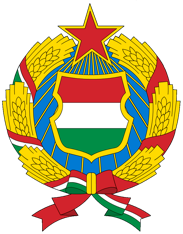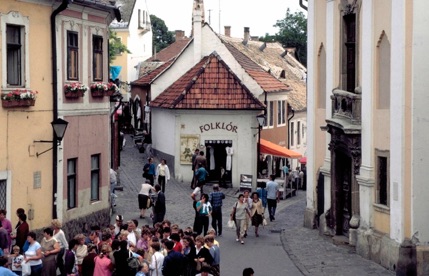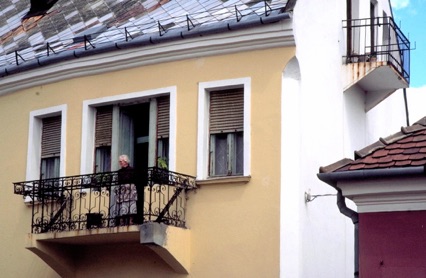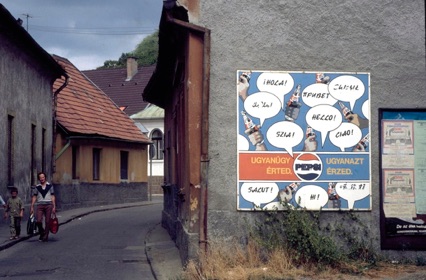Europe 1987

Kyrgyzstan and Tajikistan 2018

Following a reasonable night’s sleep, we had an early breakfast. It had rained overnight, but the clouds had cleared by the morning and we had a sunny day as we travelled north and then north-east from Budapest.
Our first stop was just 18 kilometres north from Kármán Todor College in Békásmegyer, where a new high rise house housing estate (the Békásmegyeri Lakótelep) appeared to have been completed recently using the classic socialist construction method of prefabricated factory-made concrete panels. This construction method had been the solution used since the end of World War II across Eastern Europe to solve the chronic shortage of housing accommodation, hence the common nick-name for them – Khrushchyovka (which is Russian for “Khrushchev slums”). Békásmegyeri Lakótelep was one of the most extensive high-rise estates I had yet seen in Eastern Europe, and had the advantage of having a sign with a map showing the layout of the estate. I understand that a high-rise housing estate might not be especially interesting to many travellers, but for a geographer such as myself, it was sublime – patterns of planning and construction are so clear to see before trees and vegetation have become established.
Our second stop was Szentendre, a town 35 kilometres further north from Békásmegyer. The town had a lovely old town centre, although it was somewhat spoilt by excessive tourism, something we had not really experienced in Eastern Europe. We did a quick walk around the town, had lunch, and then drove back through the outskirts of Budapest and onwards through some fairly flat areas. We passed through the town of Gyöngyös and continued to Eger.
We stopped at Eger to explore the large castle, mostly in ruins, that overlooks the town and a huge church in the marketplace. The extraordinary thing about the castle is that it was apparently destroyed by the Mongols when they invaded in 1241; it marked what was roughly the western limit of the huge Mongol Empire. I found it somewhat mind-blowing to be in Hungary and be standing on remnants of the Mongol Empire, which had spread westwards all the way from China and Mongolia. My amazement arose in part because Eger is only about 100 kilometres from Tállya, a village near Miskolc that claims to be the geometric centre of Europe (although the precise location of the geographical centre of Europe is highly disputed!).
After exploring Eger, we drove north-east to Miskolc, Hungary’s second largest city and our destination for the day, taking a minor, winding road to do so to see the beautiful little mountain village of Répáshuta on the way. Upon arrival in Miskolc, we stayed in a hotel for what was roughly the same price as the student accommodation we had used in Budapest; we did have to pay extra for access to a bath, but it was worth it.
After dinner we enjoyed a pleasant walk around Miskolc. One of the beautiful streets in the old part of the city, Városház Place, was under extensive repair with trams negotiating some very bent, poorly supported tramlines, but there were still some lovely sights to admire in the golden glow of the evening sunlight, especially the Avasi Reformed Church Belltower and the surrounding green parklands in Kálvin János Street.

Day 16
Budapest to Miskolc
Tuesday 28 July 1987















